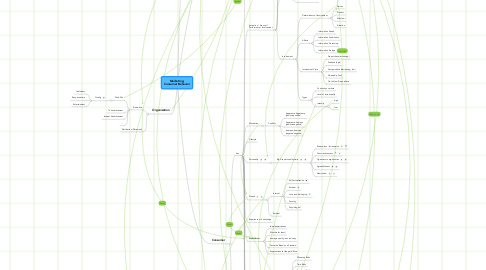
1. Organization
1.1. Promotion
1.1.1. Web Site
1.1.1.1. Quality
1.1.1.1.1. Usefulness
1.1.1.1.2. Response time
1.1.1.1.3. Entertainment
1.1.2. TV advertisement
1.1.3. Internet Advertisement
1.1.4. ...
1.2. Distribution (Placement)
2. Consumer
2.1. has
2.1.1. Emotions
2.1.1.1. Types
2.1.1.1.1. Positive (Social goals)
2.1.1.1.2. Negative (survival goals)
2.1.1.2. Theories
2.1.1.2.1. Plutchik's Wheel of Emotions
2.1.1.2.2. Broaden and Built
2.1.1.2.3. Maslow’s Hierarchy of Customer Service
2.1.1.3. Affect Decision Making
2.1.1.3.1. Anticipated (future, expected) emotions
2.1.1.3.2. Immediate emotions
2.1.1.4. Crucial role in Advertisement
2.1.2. Activation / Arousal / Performance / Involvement
2.1.2.1. Relations between Performance and Activation
2.1.2.2. Causes of Activation
2.1.2.2.1. Emotional Stimuli
2.1.2.2.2. Cognitive stimulation
2.1.2.2.3. Physical stimulation
2.1.2.3. Threats
2.1.2.3.1. Deflection or deviation
2.1.2.3.2. Over activation stimuli
2.1.2.4. Involvement
2.1.2.4.1. Determinants of Involvement
2.1.2.4.2. Affects
2.1.2.4.3. Involvement Cycle
2.1.2.4.4. Types
2.1.3. Motivation
2.1.3.1. Conflicts
2.1.3.1.1. Appetence-Appetence (positive-positive)
2.1.3.1.2. Appetence-Aversion (positive-negative)
2.1.3.1.3. Aversion-Aversion (negative-negative)
2.1.4. Lifestyle
2.1.5. Personality
2.1.5.1. Big Five personality traits
2.1.5.1.1. Extraversion - Introversion
2.1.5.1.2. Conscientiousness
2.1.5.1.3. Openness to experiences
2.1.5.1.4. Agreeableness
2.1.5.1.5. Neuroticism
2.1.6. Needs
2.1.6.1. Internal
2.1.6.1.1. Self-actualization
2.1.6.1.2. Esteem
2.1.6.1.3. Love and belonging
2.1.6.1.4. Security
2.1.6.1.5. Physiological
2.1.6.2. External
2.1.7. Experience or Knowledge
2.1.8. Expectations
2.1.8.1. Ideal expectations
2.1.8.2. Must be (at least)
2.1.8.3. Average quality in an industry
2.1.8.4. Favourite Brand as a Standard
2.1.8.5. Expectations for the paid Price
2.1.9. Perceived Risks
2.1.9.1. Types of Risks
2.1.9.1.1. Monetary Risks
2.1.9.1.2. Time Risks
2.1.9.1.3. Functional Risks
2.1.9.1.4. Physical Risks
2.1.9.1.5. Social Risks
2.1.9.1.6. Phychological Risks
2.1.9.2. Risk Reduction Methods
2.1.9.2.1. Information Search
2.1.9.2.2. Remain Brand Loyal
2.1.9.2.3. Rely on Brand Image
2.1.9.2.4. Rely on Store Image
2.1.9.2.5. Buy the most expensive
2.1.9.2.6. Look at guarantees
2.1.9.3. Buyers vs Purchase sensitive to Risks
2.1.10. Attitudes
2.1.10.1. Tri-Component Model
2.1.10.1.1. Affective (Emotions and Feelings)
2.1.10.1.2. Cognitive
2.1.10.1.3. Conative (volition)
2.1.10.2. Measures
2.1.10.3. Attitude Toward Object Model (for Change Attitudes)
2.1.10.3.1. Add an attribute to product
2.1.10.3.2. Change the weight (perceived importance) of an attribute
2.1.10.3.3. Develop new Product
2.1.10.4. Attitude Formation
2.1.10.4.1. Experience or Knowledge
2.1.10.4.2. Word of mouth
2.1.10.4.3. Advertisements / Media
2.1.10.5. Affect
2.1.10.5.1. Product image
2.1.10.5.2. Brand Image
2.1.11. Cognitive Dissonance (after sale)
2.1.11.1. reduce by
2.1.11.1.1. Increase the chosen attractiveness
2.1.11.1.2. Decrease attractiveness of alternatives
2.1.11.1.3. New Information search and finding confirmation
2.1.12. Uncertainty (before / after sale)
2.1.12.1. Provide instructions, welcome kit, support
2.2. does
2.2.1. Decision Making Process
2.2.1.1. Meta Goals in Decision Making
2.2.1.1.1. Maximize the Accuracy
2.2.1.1.2. Minimize the Cognitive Efforts (computation)
2.2.1.1.3. Minimize negative emotions (errors)
2.2.1.1.4. Maximize the Ease of evaluation of the Decision
2.2.1.2. Process
2.2.1.2.1. Postpurchase behavior
2.2.1.2.2. Decision
2.2.1.2.3. Selection from Alternatives
2.2.1.2.4. Evaluation of alternatives
2.2.1.2.5. Information Search
2.2.1.2.6. Problem Recognition
2.2.1.3. Levels
2.2.1.3.1. Routinized
2.2.1.3.2. Limited
2.2.1.3.3. Extensive
3. Product
3.1. features or attributes
3.1.1. Feature evaluation and selection (Kano Model)
3.1.1.1. Must be
3.1.1.2. Performance (One-dimensional)
3.1.1.3. Neutral (indifferent)
3.1.1.4. Attractive
3.1.1.5. Reverse
3.2. marketing image
3.3. Value
3.4. Price
3.4.1. Monetary (money paid)
3.4.2. Non-monetary (time, efforts, etc)
3.5. Guarantees (positive presale signal)
3.5.1. Effects
3.5.1.1. Internal
3.5.1.1.1. Focus on Needs
3.5.1.1.2. Improve services and processes
3.5.1.1.3. Identifies failure points
3.5.1.1.4. Collect feedback
3.5.1.1.5. Define quality standards
3.5.1.2. External
3.5.1.2.1. Risk reduction
3.5.1.2.2. Quality signal
3.5.1.2.3. Word of mouth
3.5.1.2.4. Gives feedback if dissatisfied
3.5.1.2.5. Reduce dissatisfaction
3.5.2. Characteristics
3.5.2.1. Unconditional
3.5.2.2. Easy to understand
3.5.2.3. Reasonable
3.5.2.4. Easy claimable
3.5.2.5. Credible
4. Customer Satisfaction
4.1. Measures
4.2. gives
4.2.1. Customer Loyalty
4.2.1.1. Buz more
4.2.1.2. Less price sensitive
4.2.1.3. Servicing them is cheaper
4.2.1.4. Spread positive word of mouth
4.2.1.5. Readz market for new products
4.2.2. Customer Delight
4.2.3. Market Success
4.2.4. Economic Success
4.2.5. Customer Retention
4.2.5.1. Intensity of Satisfaction
4.2.5.2. Type of satisfaction
4.2.5.3. Risk of Alternatives
4.2.5.4. Actual (emotional) Loyalty
